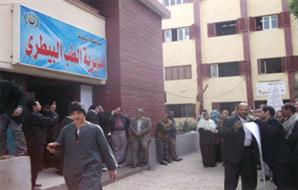AMAZING!
MAYBE 5
- Last Updated on 28 January 2013
- By Mom Kunthear and Justine Drennan

A shipment of live chickens from the provinces is unloaded at O’Russey market in Phnom Penh, Sunday, Jan. 27, 2013. Photograph: Vireak Mai/Phnom Penh Post
In the wake of a Ministry of Health announcement of two fatalities among the three confirmed human cases of avian flu in the new year, authorities this weekend increased efforts to eradicate affected birds, even as some officials reported a fourth case.
An official on the Ministry of Health’s human influenza hotline and a commune chief said yesterday a two-year-old girl from Kampong Speu was diagnosed with H5N1 on Saturday after being admitted to Kantha Bopha hospital in Phnom Penh, where a 15-year-old girl died of the virus last Monday.
Due to less-rigorous monitoring of the disease in other hospitals, the cases seen in Kantha Bopha hospital were likely just the “tip of the iceberg”, said Dr Philippe Buchy, head of the virology unit at the Institut Pasteur du Cambodge, the medical research centre that tested the recent cases.
In Takeo province’s Prey Kabbas district, officials in Snao village, the home of last week’s 15-year-old victim, killed and burned more than 4,000 chickens and ducks on Saturday and prohibited the import of new poultry into the village for one month, Prey Kabass district governor Ith Sa said.
“The officials from the ministries of Health and Agriculture, Forestry and Fisheries, the provincial governor, the courts and local government decided to collect and burn the poultry in the village in order to prevent the spreading [of the virus] to other places,” Sa said.
Local health officials had buried the burned birds outside the village, sprayed the village and distributed medicine to eradicate the virus, he said.
Officials in Kong Pisei district’s Prey Nhat commune, in Kampong Speu province, the home of the two-year-old confirmed on Saturday to be the fourth case of the year, were pushing similar measures, according to commune chief Chan Sun.
Sun said a lot of poultry in the commune tended to get sick during the dry season, and officials had told villagers not to cook or touch sick or dead birds.
“They have to burn and bury the dead poultry,” he said. “We have also prohibited poultry buyers who usually come into the commune from buying chickens in the commune for a while until we are sure everything is safe.”
More than 40 chickens at the infected toddler’s house had fallen sick and died, and, as with the other three cases this month, health officials suspect contact with poultry had caused her to become ill.
“Health officials went to the girl’s and her neighbours’ houses this morning to spray and distribute medicines, and they tested some poultry,” Sun said.
Testing individual birds for the virus was the most common method of tracking the virus, but it did not necessarily reflect H5N1’s ubiquity in environments such as markets, Institut Pasteur’s Buchy said.
Although Ith Sa said health officials had sampled 10 birds taken from 10 villagers in Snao and found them clean, Buchy said samples taken from such elements as soil, water and feathers better reflected the exposure caused by “many poultry together” — the situation seen in markets.
A study co-written by Buchy, to be published in the journal Emerging Infectious Diseases in February, has found that as many as 20 per cent of such samples, from markets in Phnom Penh, Takeo and Kampong Cham, tested positive for H5N1.
Although this finding did not directly demonstrate the disease’s risk to humans, recent cases showed that not only farmers who routinely handled poultry but also people “swimming in ponds where there are ducks, going to markets and... plenty of things” could be exposed to the virus, Buchy said.
According to Friday’s press release by the WHO and the Ministry of Health, the world has seen 613 confirmed cases of the virus and 362 related deaths, while Cambodia has seen 24 confirmed cases and 21 deaths since the virus emerged a decade ago. The case reported on Saturday would be Cambodia’s 25th.
The last case officially confirmed in Friday’s Ministry of Health statement — a 35-year-old man also from Kampong Speu’s Kong Pisei district, but from Preah Nipean commune — died last Wednesday. In the year’s first case, an eight-month-old boy from Phnom Penh recovered after being diagnosed with the virus.




